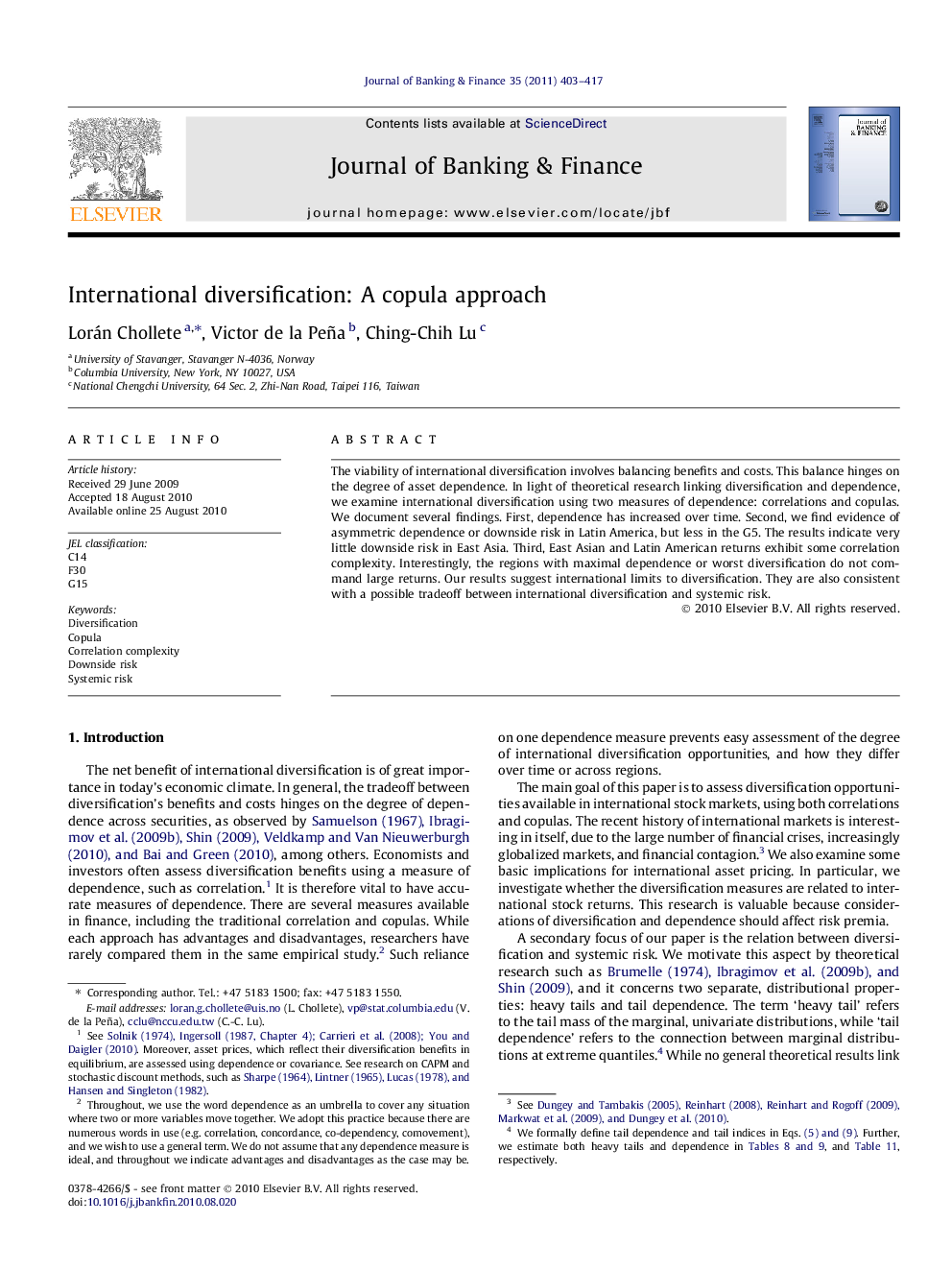| Article ID | Journal | Published Year | Pages | File Type |
|---|---|---|---|---|
| 5090578 | Journal of Banking & Finance | 2011 | 15 Pages |
Abstract
The viability of international diversification involves balancing benefits and costs. This balance hinges on the degree of asset dependence. In light of theoretical research linking diversification and dependence, we examine international diversification using two measures of dependence: correlations and copulas. We document several findings. First, dependence has increased over time. Second, we find evidence of asymmetric dependence or downside risk in Latin America, but less in the G5. The results indicate very little downside risk in East Asia. Third, East Asian and Latin American returns exhibit some correlation complexity. Interestingly, the regions with maximal dependence or worst diversification do not command large returns. Our results suggest international limits to diversification. They are also consistent with a possible tradeoff between international diversification and systemic risk.
Related Topics
Social Sciences and Humanities
Economics, Econometrics and Finance
Economics and Econometrics
Authors
Lorán Chollete, Victor de la Peña, Ching-Chih Lu,
